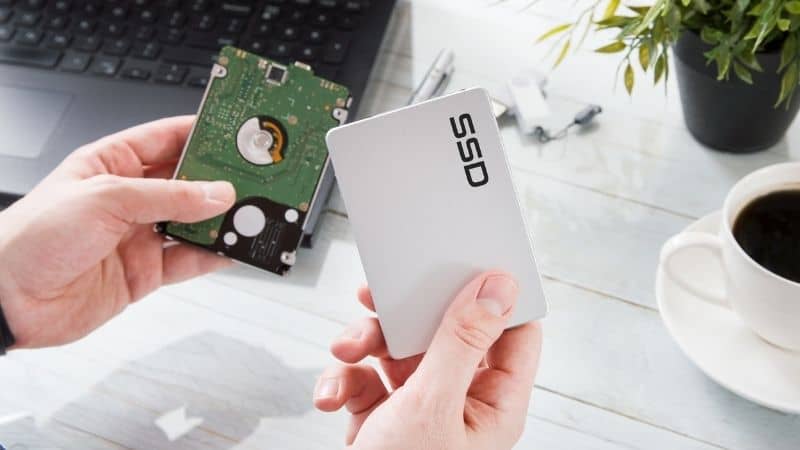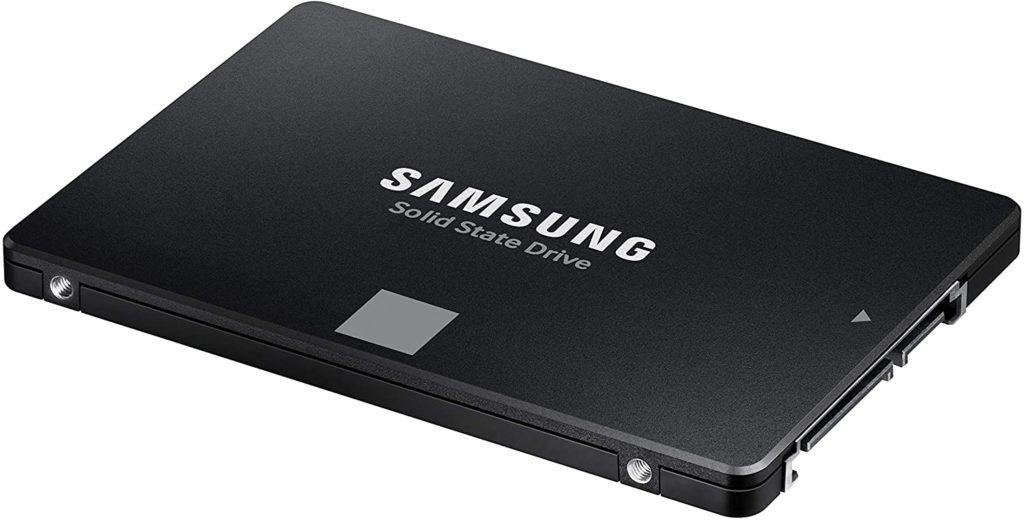What Is An SSD?

Table of Contents
What is a Solid State Drive? SSD stands for Solid State Drive (as HDD stands for hard-disk drive) and SDD essentially describes a type of hardware storage memory used in your computer. Understanding how this memory works can help you get a better understanding of how your data is stored, and how to protect it. So we’ll go through the function and operation of an SSD.

How Is An SSD Different From An HDD?
An SSD is like a hard disk drive (HDD) in that it provides a similar function, but it uses different operations in order to store memory and data.
A hard drive has a physical platter like a large CD and an actuator arm like you’d find on vinyl players. Together these can read data that is not stored sequentially but is often fragmented around the disk.
A solid state drive, so-called because it doesn’t move and has memory fixed in a solid state works similarly to how USB memory works – using flash recall to store memory.
This means that you can recall data almost instantly as, unlike a hard drive, SSDs do not require mechanical boot-up in order to physically find the data on the platter.
What Does An SSD Do?
An SSD, just like an HDD, works with your system's memory to access and recall data when you need it. Simple as that.
Some modern computers will have an SSD as well as an HDD, which allows you to recall data in two succinct ways. However, for space-saving and performance reasons, laptops, Chromebooks, and Macbooks all use SSD drives.
HDDs are still useful for desktop systems though because they can hold the more important data that doesn't require quick recall. Meanwhile, your SSD can deal with the stuff that needs to be recalled quickly.
While you may decide what data is stored where on your system, system builders will place the operating system on an SSD for speed – and you may want games stored on an SSD too for this very reason.
Different Forms Of SSD
Let’s run through different forms of SSD and what they offer, without getting into the details.
Most SSD forms are defined by their size, type of connection, and where they live in your physical computer. This is often dependent depending on the size of device they go into.
2.5-inch SSD
This is the most common form of SSD you will find inside both laptops and computers, connected via a SATA cable.
They work in conjunction with the HDD in order to have both quick and easy quick recall. They also make upgrades much easier if you choose to scrap your HDD altogether.
mSATA SSD
You don't really need to know what all the letters mean, simply that an mSATA SSD is physically around an eighth of the size of the 2.5 inch SSD.
These SSDs plug straight into your motherboard, meaning they are ideal for your smaller devices such as a laptop or netbook, etc. Some systems even use them as a secondary SSD in a larger computer.
M.2 SSD
This is the smallest form of an SSD and is most common in tablets and other space-constrained devices, like small laptops. They are around the size of a stick of gum.
Final Thoughts
What is essential to know is that a solid state drive (SSD) is used to access memory quickly, and a hard disk drive (HDD) is much slower but generally more affordable. In conjunction, they can store different types of data that require different speeds of recall.
An SSD, as it doesn’t require the physical finding of data, can be a lot smaller than an HDD, causing them to be used in laptops and other smaller devices. That’s why they’re in so many devices, and why a good SSD is so important.
